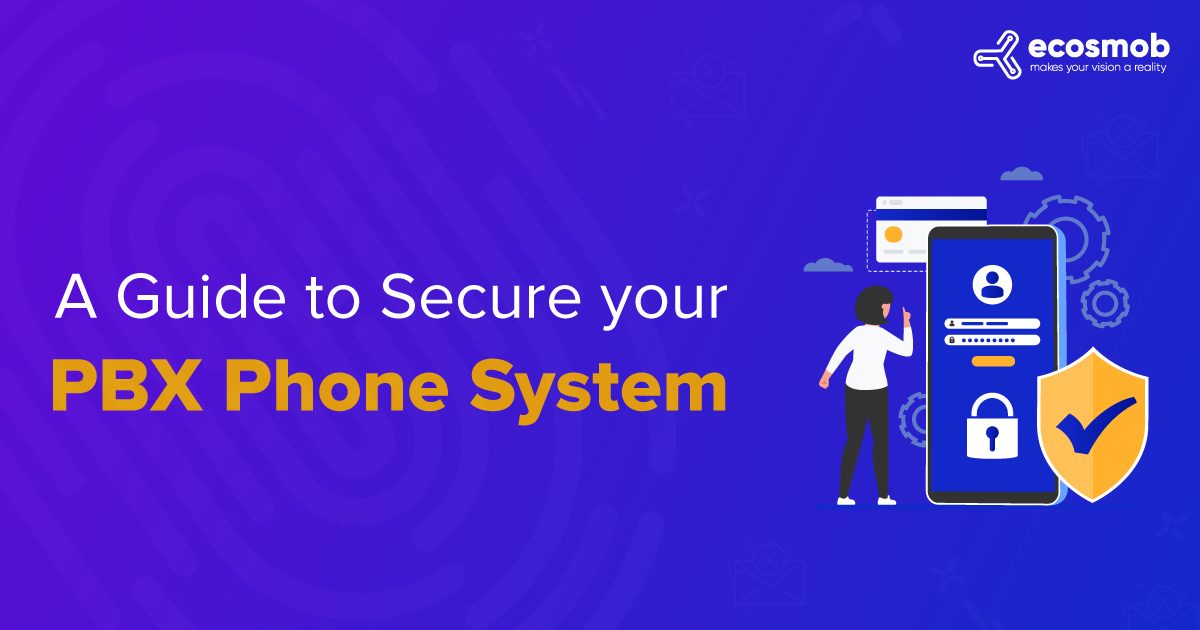A PBX (Private Branch Exchange) is a private telephone network that enables you to communicate efficiently. A PBX system manages advanced calling features and routing for inbound and outbound calls. With technological advancements, hackers are increasingly accessing phone systems at businesses. You must take action to maintain proper IP PBX security as the owner of your phone system; we will discuss how to safeguard your hosted IP PBX solutions against fraud.
It is essential for any business to keep its PBX phone system safe to prevent unauthorized access. The most direct approach to stop PBX hacking and minimize the possible harm and costs to your business is to have a properly secured multi-tenant IP PBX solution infrastructure. Some practice standards can help you decrease the risk of PBX hacking. To help you with your system security efforts, you might need to speak with your service provider. Here are some tips that can help you secure your multi-tenant IP PBX development solution:
- Limit the use of a phone’s external call forwarding services.
- Never use any default codes or passwords that have been pre-configured. After installing PBX, always ensure to change default settings and update them frequently.
- For PBX security, set random passwords with at least six to eight digits.
- Avoid using apparent passwords like your address, birthday, phone number, or a string of consecutive or repeated numbers. Avoid using sequential, ascending, or descending digits or any portion of a phone number for your passwords.
- To secure your hosted IP PBX solution, periodically request employees to update their password and permission codes.
- Be aware of signs of IP Private Branch Exchange fraud such as increased numbers of unexpected incoming hung-up calls, sudden changes in calling patterns, and more.
Use Strong Passwords
A weak password can expose a security hole that hackers could simply take advantage of and hack your system. With a strong password, you should protect each password needed for your multi-tenant IP PBX solution. Passwords are typically required for voicemails, administrative web interfaces, user web interfaces, and extension registrations in a typical system. Wherever possible, you should use strong passwords with at least eight characters, a mix of upper- and lower-case letters and numerals, and change them at least every 2-3 months.
Maintain PBX Updates
The first item on your IP PBX security checklist should always be a routine inspection and update of your PBX software and firmware. The most recent version is usually the one that is the safest. It resolves and uncovers all the bugs and other possible weaknesses. Additionally, due to the rapid advancement of technology, some essential security features or layers of protection are occasionally only supported by the most recent version.
Voice and Data Traffic Are Separate
Voice over IP security threats can be effectively avoided by separating voice and data transmission. To enable NGN ports (Next Generation Network), which can divide data networks, voice networks, and video networks or any combination of the three to build a converged network, certain VoIP ISPs offer dedicated SIP trunks. However, if you don’t have access to it, configuring VLANs (Virtual Local Area Networks) on your multi-tenant IP PBX development solution system can be a workaround. A VLAN switch may logically divide the voice and data traffic. The other VLAN will be secure even if one is breached. Additionally, VLANs can impede an outside attack by restricting traffic volume to IP telephony.
Don’t Use Port Forwarding.
Some on-premises multi-tenant IP PBX development solution manufacturers will advise port forwarding to provide remote access for mobile workers. But this is not at all a smart move. Port forwarding and port mapping expose your firewall to potential threats. It is better to deploy a VPN device at both ends or use a secure cloud service. It will help you keep all your traffics safe.
Secure The Hosted IP PBX Solutions Trunks
Seizing the POTS lines or SIP trunks for expensive international calls is one of the most obvious uses for IP PBX hacking. The simplest VoIP security procedure to avoid this is to disallow anonymous incoming calls and restrict the use of outbound calls from each vulnerable end-point.
Use Firewall to Block Unauthorized Access
The multi-tenant IP PBX solution‘s traffic is filtered and controlled by pre-configured firewall rules. Your PBX’s firewall rules allow you to filter specific source IP addresses/domains, ports, and MAC addresses and restrict risky (or suspicious) access that could lead to an attack.
Wrapping Up
Given that hosted IP PBX solution is quickly gaining market share and that businesses worldwide are recognizing its benefits and implementing it, it is essential to consider the consequences of VoIP security. A hosted IP PBX solution may readily incorporate PBX security. It secures your PBX phone systems from compromising network threats.
